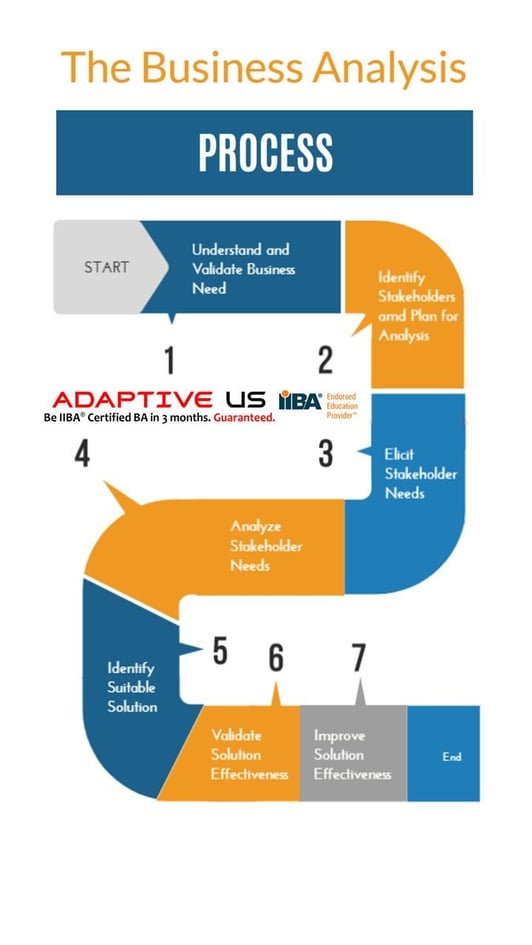Business Analysis Process
The set of tasks and techniques that are used to perform business analysis are defined in the Guide to the Business Analysis Body of Knowledge® (BABOK® Guide). We have listed all the tasks in BABoK in a subsequent section. Unfortunately, BABoK does not give a definite business analysis process definition. It is rightly so because the situations are different, organizations are different, needs are different. Trying to propose a business analysis process in such varied conditions can really be a nightmarish approach.
At the same time, applying Pareto’s principle, it will be prudent to say that in about 80% of the situations, we can propose a solid business analysis process. For remaining 20% cases, of course, we need expert guidance and need to design custom process. We are proposing a 10-step approach to business analysis. We propose following 7 steps business analysis process.

1. Plan, Engage, and Monitor
There are certain activities which run across the business analysis life cycle. This is numbered as 0 as it is the foundation for the remaining phases. Phase 0 will involve continuous planning, monitoring, engaging stakeholders, managing issues, risks, requirements, traceability. For every phase, we should perform an appropriate level of planning and monitoring.
2. Understand Project Context, Objectives, and Scope
Often business analysts are expected contribute as soon as possible towards project delivery. Often, the project may have started already, or a phase may be completed. As business analysts, it’s our job to clarify the business and project objectives as quickly as possible. Investing some time, whether that’s a few hours or few days, to get oriented will ensure we are not only moving quickly but also competent, effective, and confident contributor for the project.
3. Elicit Requirements
Plan to understand the process and expectations in detail from various stakeholders to understand their expectations from the solution. Identify stakeholders who are in best position to provide the requirements. Choose appropriate techniques to conduct elicitation activities.
4. Manage Requirements
Not all stakeholder expectations can be met given the organizational constraints. We need to understand which requirements are critical and feasible.
6. Document Requirements
Detailed requirements provide the implementation team with the information they need to implement the solution.
7. Define solution options
Define suitable solution options to meet business and stakeholder needs.
8. Evaluate and Improve Solution Performance
A track record of successful projects creates significant positive momentum within an organization. So, if we need to assess the value created by the solution.


